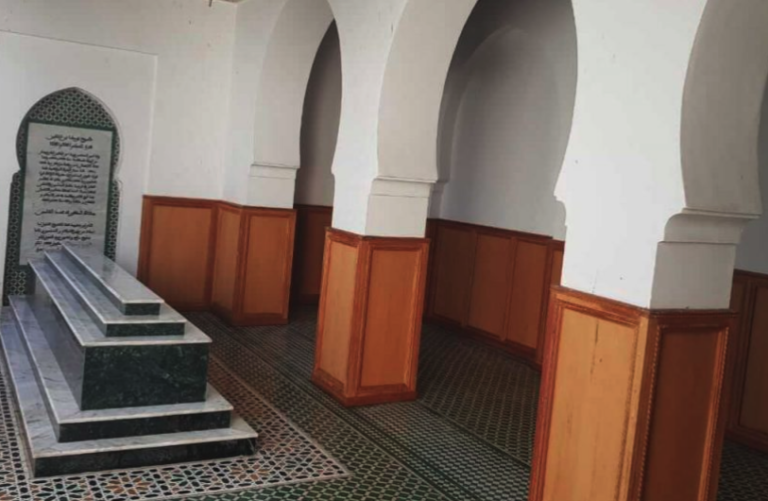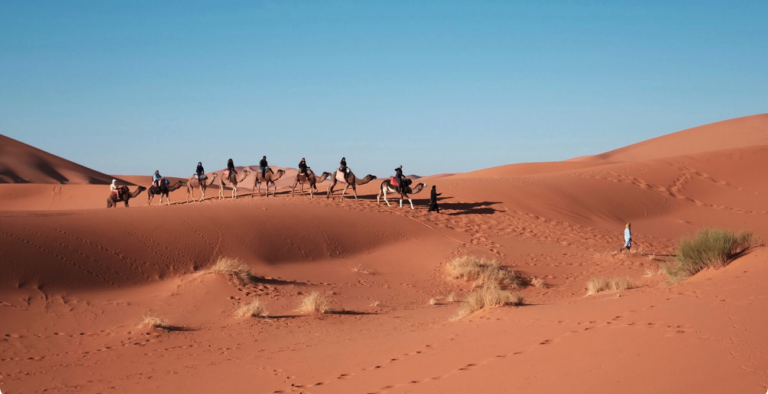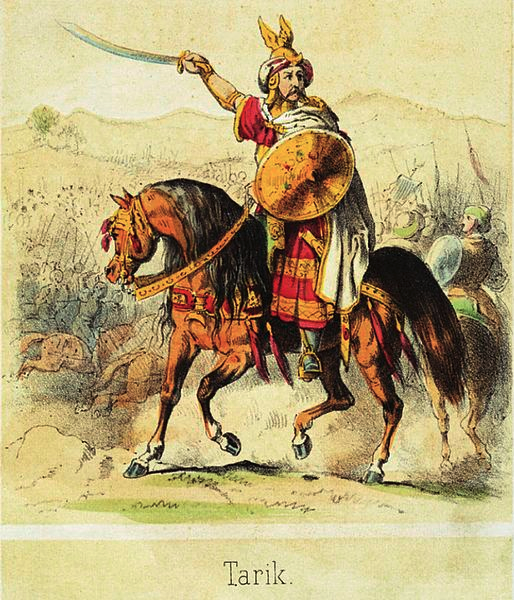When exploring the architectural marvels of Morocco, one cannot ignore the profound influence of Islamic architecture that has left an indelible mark on the country’s landscape.
From the grand mosques to the intricate details adorning private residences, Morocco is a treasure trove of Islamic architectural excellence.
This article delves into the legacy of Islamic architecture in Morocco, highlighting its significance in shaping both religious devotion and aesthetic beauty.
In Marrakech, a city renowned for its vibrant culture and bustling markets, stands the iconic Koutoubia Mosque.
A symbol of Islamic devotion and architectural prowess, this magnificent structure towers over the cityscape with its soaring minaret.
Built during the reign of Almohad Caliph Yaqub al-Mansur in the 12th century, it serves as a reminder of Morocco’s rich history and spiritual heritage.
The Koutoubia Mosque showcases meticulous craftsmanship through its intricate geometric patterns and delicate calligraphy that adorn its walls.
Its grandeur is further accentuated by its proportions and symmetry, reflecting the principles deeply rooted in Islamic architecture.
Morocco’s architectural landscape also bears witness to a fusion of influences from Arab, Berber, and Islamic traditions.
The synthesis of these diverse elements creates a unique aesthetic that sets Moroccan architecture apart from other regions influenced solely by Islamic design principles.
From ornate palaces to humble dwellings, Moroccan architecture seamlessly blends decorative motifs such as zellij tilework with traditional arches known as horseshoe or pointed arches.
This amalgamation reflects not only cultural diversity but also an appreciation for harmonious coexistence within society.
The legacy of Islamic architecture in Morocco extends beyond religious structures; it has permeated public buildings and private residences alike.
Whether it is government buildings adorned with intricately carved wooden ceilings or riads (traditional Moroccan houses) boasting enchanting courtyards embellished with fountains and mosaics – each structure tells a story steeped in history and cultural significance.
By studying the architectural heritage of Morocco, one can unravel the layers of Islamic influence that have shaped the country’s built environment, leaving a lasting legacy for generations to come.
In conclusion, the legacy of Islamic architecture in Morocco is a testament to its profound impact on both religious devotion and aesthetic beauty.
From the towering minaret of the Koutoubia Mosque to the intricate details adorning private residences, Moroccan architecture showcases meticulous craftsmanship and a fusion of diverse cultural influences.
By exploring this rich architectural heritage, one can gain a deeper understanding of Morocco’s vibrant history.
Key Takeaways
- Moroccan architecture draws inspiration from Islamic architecture and incorporates influences from Arab, Berber, and Islamic traditions.
- The Koutoubia Mosque in Marrakech symbolizes Morocco’s religious heritage and showcases the architectural prowess of the 12th century.
- Islamic architecture in Morocco extends beyond religious structures to public buildings and private residences, with intricate carvings, zellij tilework, and enchanting courtyards.
- Moroccan medinas reflect the principles of Islamic spatial organization, providing shade, air circulation, and privacy, and inspiring contemporary designs globally.
The Koutoubia Mosque in Marrakech: A Symbol of Islamic Devotion and Architectural Excellence
You can’t help but be in awe as you stand before the magnificent Koutoubia Mosque in Marrakech, its towering minaret reaching towards the heavens, a testament to the unwavering devotion and architectural brilliance of Islamic culture.
The Koutoubia Mosque is not only a place of worship for Muslims but also a symbol of significance that represents Morocco’s rich history and religious heritage. Its construction dates back to the 12th century during the Almohad dynasty, and it has since become an iconic landmark and an emblematic representation of Moroccan identity.
The symbolic significance of the Koutoubia Mosque lies not only in its grandeur but also in its historical preservation. Despite undergoing various renovations over centuries, it has managed to maintain its original design and essence.
The mosque’s imposing minaret stands at an impressive height of 77 meters, making it one of the tallest structures in Marrakech. Its distinctive shape with intricate geometric patterns showcases Islamic architectural excellence.
Historical preservation plays a crucial role in ensuring that future generations can appreciate and understand the legacy of Islamic architecture embodied by the Koutoubia Mosque. The intricate details, from the arches and columns to the ornate decorations adorning its walls, reflect both artistic mastery and religious symbolism. This preservation effort allows visitors to experience firsthand how this magnificent structure has stood the test of time while still serving as a place of prayer for devout Muslims.
As you transition into exploring ‘the fusion of Islamic, Arab, and Berber influences in Moroccan architecture,’ you begin to realize that these elements are seamlessly integrated into every aspect of Moroccan design.
From mosques like Koutoubia to palaces such as Bahia Palace or even traditional houses like riads found throughout Morocco, each structure tells a unique story about how different cultures have shaped Moroccan architecture over centuries without losing their distinct identities.
The Fusion of Islamic, Arab, and Berber Influences in Moroccan Architecture
If you want to witness the vibrant blue streets of Chefchaouen, marvel at the intricate details of the Bahia Palace in Marrakech.
The fusion of Islamic, Arab, and Berber influences in Moroccan architecture is truly a sight to behold.
Walking through the narrow alleys of Chefchaouen, you’ll be surrounded by stunning shades of blue that reflect the city’s rich history and cultural significance.
And as you explore the Bahia Palace in Marrakech, you’ll be captivated by its ornate carvings, delicate tile work, and lush gardens that showcase the skill and craftsmanship of Moroccan artisans throughout history.
Witness the Vibrant Blue Streets of Chefchaouen
Nestled within the mountains of Morocco, a mesmerizing maze of vibrant blue streets awaits in Chefchaouen, evoking a sense of serenity reminiscent of an artist’s palette.
As you step foot into this picturesque town, you’re immediately captivated by the overwhelming presence of the color blue that adorns every nook and cranny. It’s as if the entire town has been dipped in azure hues, creating a surreal atmosphere that transports you to another world.
To truly appreciate the beauty of Chefchaouen’s blue streets, imagine yourself strolling along its narrow alleyways while taking in the following sights:
- Cobblestone pathways lined with whitewashed houses accentuated by bright blue doors and windows.
- Intricate geometric patterns painted on walls in shades ranging from sky blue to deep indigo.
- Artisan shops showcasing locally crafted ceramics, textiles, and jewelry adorned with traditional Berber motifs.
- Bougainvillea flowers bursting with vibrant pinks and purples cascading down from balconies above.
- The play of light and shadow as sunlight filters through narrow gaps between buildings, casting a soft glow on the cobalt surfaces.
Such meticulous attention to detail highlights not only the visual appeal of Chefchaouen’s streets but also their cultural significance. The use of blue stems from ancient traditions where it was believed to ward off evil spirits and bring good luck. This symbolism can still be witnessed today as Moroccan craftsmen continue to explore local craftsmanship by preserving this longstanding tradition.
Now, let’s marvel at the intricate details of the Bahia Palace in Marrakech without leaving behind Chefchaouen’s enchanting allure.
Marvel at the Intricate Details of the Bahia Palace in Marrakech
As you step into the Bahia Palace in Marrakech, your eyes are immediately drawn to the exquisite intricacy of its design. Delicate carvings and ornate tilework adorn every surface, captivating your attention and showcasing the remarkable craftsmanship of Islamic architecture in Morocco. The intricate tilework, known as zellij, is a defining feature of this architectural style and is meticulously crafted by skilled artisans. These tiles come together to create mesmerizing geometric patterns that not only enhance the aesthetic appeal of the palace but also serve a functional purpose by keeping the interiors cool during hot Moroccan summers.
To fully appreciate the historical significance of the Bahia Palace, it is important to understand its cultural context. Built in the late 19th century by Grand Vizier Si Moussa as a residence for his personal use and to house his extensive harem, this palace reflects both traditional Moroccan architectural elements and influences from Andalusian Spain. The careful attention to detail in every aspect of its construction showcases the wealth and power of those who inhabited it. The intricate tilework found throughout the palace symbolizes prosperity and luxury, while also serving as a testament to Morocco’s rich artistic heritage.
Transitioning into the subsequent section about ‘the impact of Islamic architecture on public buildings and private residences in Morocco,’ one can observe how these intricate details have influenced architectural styles across different types of structures throughout the country.
The Impact of Islamic Architecture on Public Buildings and Private Residences in Morocco
When exploring the impact of Islamic architecture on public buildings and private residences in Morocco, you’ll uncover the profound influence it has had on the layout of medinas.
The intricate design and arrangement of these ancient urban centers reflect the principles of Islamic spatial organization, creating a harmonious blend of functionality and aesthetic appeal.
Furthermore, experiencing the unique architectural style found in Moroccan homes and buildings is an inspiring journey that continues to captivate architects worldwide, inspiring them to incorporate elements of this rich heritage into their own designs.
Uncover the Influence on the Layout of the Medinas
Explore the labyrinthine streets of the medinas in Morocco and witness firsthand the intricate layout influenced by Islamic architecture. The influence of Islamic architecture on urban planning is evident in the design of medinas, which are historic city centers characterized by narrow and winding streets.
These layouts were carefully crafted to provide shade, promote air circulation, and create a sense of privacy for residents. The preservation of traditional techniques used in the construction of medinas has ensured that these architectural masterpieces stand as a testament to Morocco’s rich heritage.
The narrow streets in the medinas serve multiple purposes: they provide shade from the intense Moroccan sun, which helps to keep buildings cool during hot summers; they also promote air circulation, allowing for natural ventilation and reducing reliance on artificial cooling systems. Additionally, these compact streets discourage high-speed traffic and create a more pedestrian-friendly environment.
The intricate layout of the medinas also contributes to a sense of privacy and security for residents. With their maze-like design, it becomes difficult for outsiders to navigate through the narrow alleys, thus creating a protective barrier against potential intruders or unwanted visitors.
Traditional construction techniques play an essential role in preserving the authenticity and cultural significance of medinas. Craftsmen employ age-old methods such as hand-carving intricate patterns into plasterwork or using locally sourced materials like adobe bricks. These techniques ensure that each building within the medina reflects its historical context while maintaining its structural integrity.
Furthermore, Islamic architectural influences can be seen in the use of geometric patterns and decorative motifs found throughout the medina. These elements not only enhance visual appeal but also symbolize deeper meanings within Islamic culture.
As you explore these ancient cities, you will experience firsthand how Morocco’s unique architectural style inspires architects worldwide. From its ornate tile work to its elaborate arches and courtyards, every detail tells a story about centuries-old craftsmanship and design principles rooted in Islamic traditions.
Step into this world of architectural wonders and discover the enduring legacy of Islamic architecture in Morocco.
Experience the Unique Architectural Style that Inspires Architects Worldwide
The unique architectural style of Morocco’s medinas inspires architects worldwide, with over 1,000 international architecture firms drawing inspiration from its intricate designs and cultural significance.
The influence of Islamic architecture in Morocco can be seen in contemporary designs across the globe, as architects incorporate elements such as geometric patterns, ornate detailing, and the use of local materials.
The rich history and cultural heritage that’s embedded within these architectural wonders serve as a constant source of inspiration for modern-day designers.
One notable aspect of the influence on contemporary design is the emphasis on preservation efforts in Morocco. As architects immerse themselves in the study of Islamic architecture, they recognize the importance of preserving and maintaining these historical structures.
This has led to an increased focus on sustainable practices and adaptive reuse projects that breathe new life into old buildings while respecting their original design aesthetic.
By integrating traditional techniques with modern technology, architects are able to create spaces that pay homage to the past while meeting present-day needs.
The unique architectural style of Morocco’s medinas continues to captivate architects worldwide.
Through its influence on contemporary design and preservation efforts in Morocco, this legacy lives on in new forms that honor tradition while embracing innovation.
As more professionals draw inspiration from these ancient masterpieces, we can expect to see a continued evolution of Islamic architecture that remains true to its roots yet pushes boundaries for years to come, creating a captivating blend of the past and the future that’ll inspire generations to come.
Frequently Asked Questions
How tall is the Koutoubia Mosque in Marrakech and what materials were used in its construction?
The Koutoubia Mosque in Marrakech stands at an impressive height of approximately 77 meters. Its construction utilized materials such as red sandstone, marble, and wood, showcasing the intricate craftsmanship and grandeur of Islamic architecture.
What are some notable architectural features of Moroccan mosques other than the Koutoubia Mosque?
Notable architectural features of Moroccan mosques include intricately carved wooden ceilings, geometric tilework, and ornate stucco plasterwork. Modern interpretations incorporate elements such as contemporary glass facades and innovative lighting techniques to enhance the beauty of these structures.
How did Islamic architecture influence the design of public buildings in Morocco?
Islamic architecture in Morocco has had a profound influence on modern public buildings. Its cultural significance and symbolism are evident in the intricate designs, geometric patterns, and use of arches and domes.
What are some examples of private residences in Morocco that showcase Islamic architectural elements?
Step into the enchanting world of Moroccan riads, where Islamic and Berber architectural styles seamlessly merge. From intricately carved wooden ceilings to vibrant mosaic tiles, these private residences epitomize the influence of Islamic design in Morocco.
Are there any specific design principles that are commonly found in Islamic architecture in Morocco?
In Moroccan Islamic architecture, specific design principles can be found that reflect the influence of Moroccan culture. One notable principle is the integration of geometric patterns, which are intricately incorporated in various architectural elements.
Conclusion
In conclusion, the legacy of Islamic architecture in Morocco is a testament to the country’s rich cultural heritage and devotion to the principles of Islam. The Koutoubia Mosque in Marrakech stands as a symbol of architectural excellence and religious devotion, showcasing intricate geometric patterns and towering minarets that command attention. Its fusion of Islamic, Arab, and Berber influences further highlights the diverse cultural history of Morocco.
Furthermore, Moroccan architecture reflects the impact of Islamic design on both public buildings and private residences. The meticulous attention to detail seen in mosques is also evident in other structures such as palaces, madrasas (educational institutions), and even traditional houses known as riads. These buildings often feature ornate arches, decorative tilework known as zellij, and beautiful courtyard gardens that invite tranquility.
The influence of Islamic architecture extends beyond aesthetics; it serves as a reminder of the spiritual values embedded within Moroccan society. By incorporating elements such as soaring domes and calligraphy into their designs, architects aim to create spaces that inspire contemplation and foster a connection with God. This approach creates an atmosphere conducive to prayer and reflection while simultaneously celebrating the artistic achievements of Islamic civilization.
Overall, the legacy of Islamic architecture in Morocco showcases not only architectural excellence but also represents an intrinsic part of the country’s identity. It is through these remarkable structures that one can truly appreciate Morocco’s rich cultural tapestry – a blend of Islamic traditions alongside Arab and Berber influences. As visitors explore this captivating country, they are immersed in a world where spirituality intertwines seamlessly with artistic expression – a true embodiment of Morocco’s architectural legacy.

The Editorial Team is a passionate group of Morocco enthusiasts dedicated to sharing the beauty, culture, and wonders of this captivating country. With diverse backgrounds and a deep love for travel, we strive to bring you engaging and informative content that inspires your Moroccan adventures. From uncovering hidden gems and sharing local insights to exploring mouthwatering cuisine and showcasing the vibrant lifestyle, our team is committed to providing you with valuable resources and exciting stories that enhance your exploration of Morocco. Join us on this journey as we celebrate the rich heritage and unforgettable experiences that make Morocco truly special.



